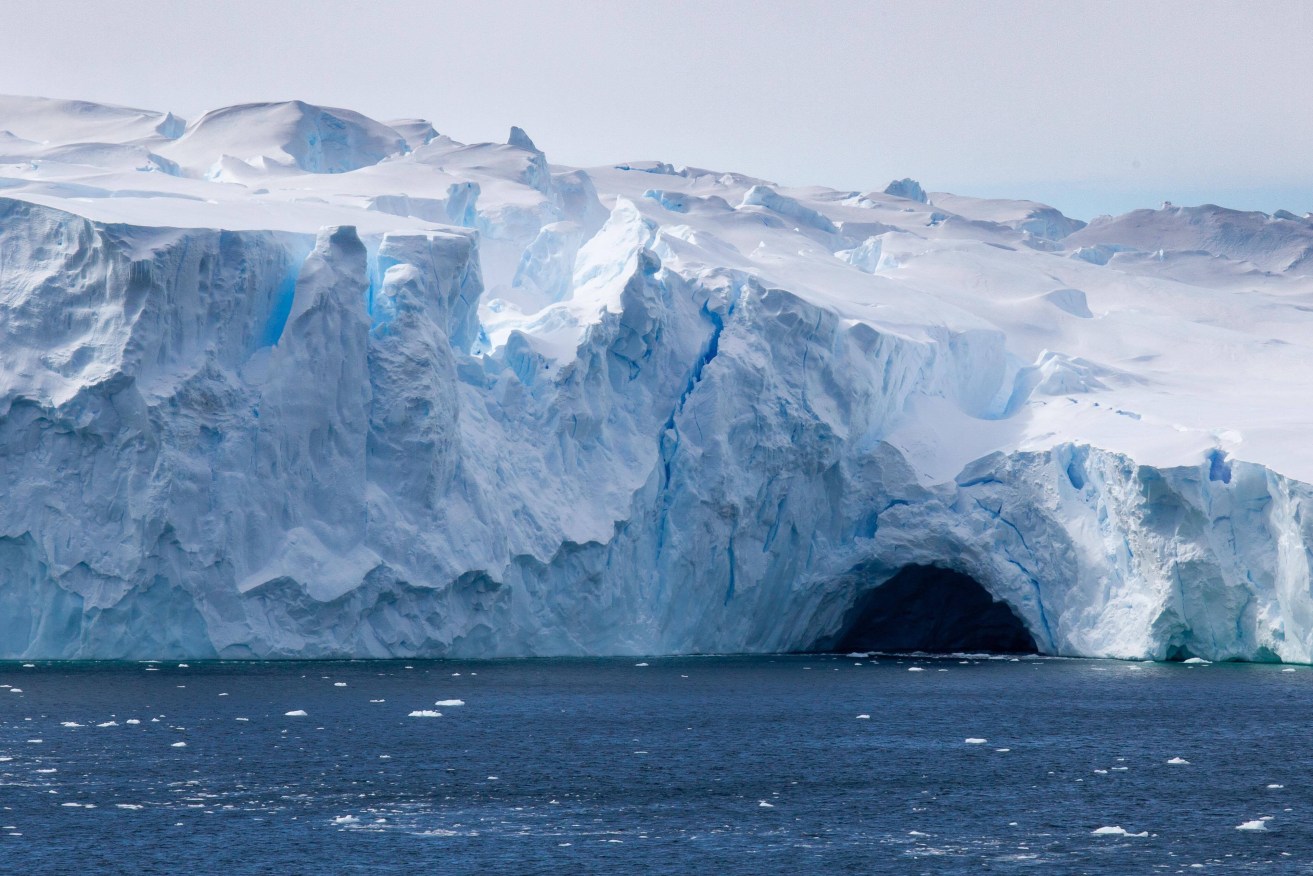Deep ocean system headed for ‘collapse’ as Antarctic ice melts

Ice sheets and glaciers are at risk of melting and receding because of climate change. Photo: AAP
Australian scientists have made dire projections about what Antarctica’s melting ice will do to global ocean health without rapid emissions cuts this decade.
Most people know fossil fuel use is warming the planet, melting polar ice caps and pushing up sea levels.
But ice loss is also disrupting water circulation in the deepest parts of the ocean.
Now, new modelling is pointing to a dramatic slowdown — and the possible collapse — of one such system that originates around Antarctica.
That could have profound, centuries-long impacts on ocean health because the system delivers nutrients that underpin the marine food web, among other vital functions.
Emissions will need to rapidly fall this decade to avoid potentially grave consequences.
They could include lower marine life abundance, but also reduced capacity for the ocean to absorb and hold heat, and more rapid ice loss.
“That’s where the urgency comes from,” says CSIRO oceanographer Dr Steve Rintoul, who helped produce the projections and has spent his career studying how the Southern Ocean around Antarctica affects earth’s systems.
“Once we slow down the circulation it’s hard to get it going again. Once we kick this off, we can’t really change our mind. These changes are irreversible on time scales of many, many centuries.”
If the world stays on its current, high-emissions pathway, Antarctic circulation could slow by more than 40 per cent over the next three decades — a trajectory that appears headed towards collapse, the modelling shows.
So how does the melting Antarctic ice sheet — the largest reservoir of fresh water on the planet — affect what happens to nutrient-rich sea water kilometres below?
The world has very few places that produce water that is cold enough and dense enough to sink to the deepest parts of the ocean.
Antarctica has four locations that produce this very cold, very salty, oxygen-rich water. In fact, about 250 trillion tonnes of it sinks near the continent each year.
But the melting of fresh-water ice is reducing salinity levels, making water that’s less dense and less able to sink.
As a result, it’s less able to displace the nutrient-rich water that’s lying far below and spread it to other locations in the deep Indian, Pacific and Atlantic Ocean.
Eventually, surface ecosystems will be robbed of that water’s payload of nutrients derived from everything that dies and sinks to the bottom.
“If we limit those nutrient upwelling fluxes, and we don’t provide enough nutrients to the basis of the food chain … clearly that has impacts for feeding populations in decades to come, into the 21st century,” says University of NSW Professor Matthew England, who coordinated the new study.
Dr Rintoul says the new modelling is vastly more sophisticated than any previous work focused on Antarctica, and that means scientists can have a far greater degree of confidence in its projections.
Simulations show a slowing of the overturning circulation, which then leads to rapid warming of the deep ocean.
“Direct measurements confirm that warming of the deep ocean is indeed already underway,” he says.
The same thing is happening to the northern hemisphere’s equivalent, with the melting of Greenland’s ice cap suppressing the North Atlantic overturning, Prof England says.
“These two water masses [in Antarctica and the North Atlantic] in a way absolutely dominate the ventilation of all of the ocean waters below about 1500 metres depth,” he says.
He says the North Atlantic system has shut down in the past, and scientists believe it’s also headed for a slowdown and potential collapse in the future.
A collapse of both systems would have profound implications for marine ecosystems globally, Prof England says.
The projections have been published in the journal, Nature.
-AAP








